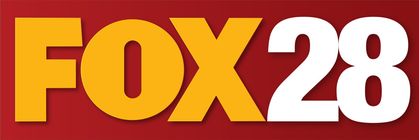Common industrial fire hazards and tips to prevent industrial fires
Industrial facilities have numerous heat sources and flammable materials that heighten the risk of fire by leaps and bounds. SERVPRO investigates the usual suspects of fire in industrial complexes and general precautions to prevent fire damage.
1. Electrical Fire Hazards
The majority of the fires every year in industrial buildings are attributed to worn-out, defective wiring or overloaded circuits. Business owners must watch out for the following signs:
-
Worn extension cords
-
Exposed wiring
-
Broken power tools
-
Overloaded outlets
-
Static discharge
-
Greasy or dusty electric motors or machines
The key to the prevention of these disastrous fires lies in training the personnel, maintenance of electrical components, and following best practices. Some of the precautions are:
-
Don’t overload electrical equipment or circuits.
-
Unplug equipment when not in use.
-
Avoid using extension cords, and consider them temporary solutions.
-
Use antistatic equipment where required by NFPA or OSHA.
-
Implement a feasible and “no-consequence” reporting system to encourage electrical fire risk reports.
2. Flammable Liquids
Certain substances commonly used in industrial settings can ignite with the slightest spark, or even by static electricity. Industrial fires are often the result of explosions of flammable materials, such as rocket fuel, acrylic acid, and crude oil.
Here are a few preventive tips that workers must follow:
-
Store solvents, paint, paint thinner, gasoline, and any other flammable liquid in OSHA-approved containers in a well-ventilated area, far from heat sources.
-
Ground containers must safely discharge static electricity.
-
Spills must be cleaned up immediately.
-
Spray painting must be limited to special fireproof booths.
-
Be aware of the safety information for every liquid on the premises. Refer to the material safety data sheet (MSDS) that accompanies such products.
-
Unless heating flammable materials for work, all ignition sources must be kept as far away as possible.
-
Personal protective equipment must be available, especially when liquids and gases are involved.
3. Compressed Gases
Since compressed flammable gases can ignite at below room temperature, even a small leak can cause a fire. The following tips are helpful when dealing with compressed gas:
-
Inspect cylinders of compressed gas regularly for leaks.
-
Store cylinders in temperatures below 50 degrees Celsius.
-
Turn off the ignition source before extinguishing a flame from a flammable gas.
4. Hot Work
Hot work usually refers to welding and torch cutting, but it may also include brazing, burning, heating, and soldering. Sparks and molten material can reach temperatures greater than 1000°F and easily travel more than 35 feet - thereby becoming a huge fire hazard.
The following protocol must be followed to mitigate the fire risk:
-
Wear fire-resistant protective clothing.
-
Follow orders on the hot work permit.
-
Weld only in areas with fire-resistant flooring or use protective shields.
-
Use containers of water or sand to catch slag.
-
Hang fireproof curtains on open doors or windows for protection.
-
Create and follow a written permit system for all hot work projects, even when permits aren’t required.
-
Assign a safety professional to supervise the work, especially when using outside contractors
-
Clear the area of flammable or combustible materials including dust, liquids, and gases.
-
Train personnel on the hazards associated with hot work, any site-specific hazards, the proper policies and procedures, and the use of safety equipment.
5. Housekeeping Practices
A clean work area is a safe work area. Poor housekeeping practices can become a cause of fires and following the below-mentioned practices can mitigate this risk:
-
Sweep up dust, lint, sawdust, and scraps.
-
Dispose of combustible waste in covered, airtight containers.
-
Unclutter the areas around machinery, stoves, heaters, and other equipment and remove all trash and cartons.
-
Use non-flammable cleaners.
-
Keep incompatible or inflammable substances away from each other.
-
Keep the sprinklers and exits free and unblocked at all times.
6. Combustible dust
Combustible dust is any fine material that can catch fire and explode when mixed with air. Everything, including food, dyes, chemicals, and metals has the potential to be combustible in dust form. A highly deadly yet overlooked fire hazard, combustible dust is a major cause of fire in almost every industry.
The best way to mitigate this fire hazard is by following good housekeeping practices and preventing the accumulation of dust to a level that may be considered a fire hazard.
-
Equipment and machinery
Heating and hot work equipment, especially poorly installed, operated, and maintained furnaces can become fire hazards. Additionally, the friction between the moving parts of mechanical equipment also poses a fire risk.
Business owners can prevent these fire hazards by following these tips:
-
Follow cleaning and maintenance procedures for each piece of equipment, including lubrication.
-
Create awareness among workers.
-
Run an efficient cleaning and housekeeping system.
-
Maintain the equipment regularly to avoid this fire hazard.
Why SERVPRO?
SERVPRO uses state-of-the-art equipment to bring the damaged property back to its original state. SERVPRO of Grapevine / NE Tarrant County is always updating its fleet and equipment so clients in Southlake, Grapevine, Keller, or anywhere else can quickly access the services.
With over 1,700 US and Canadian Franchise locations, SERVPRO is strategically positioned to respond faster to an emergency of any magnitude.
The SERVPRO staff is highly trained in fire damage restoration and other restoration services. They receive initial in-house training and constant skill up-gradation at the corporate training facility and also acquire the regular IICRC-industry certification.
For commercial fire damage restoration services, call SERVPRO of Grapevine / NE Tarrant County today at (817) 595-2506 or e-mail at office@servproheb.com


























